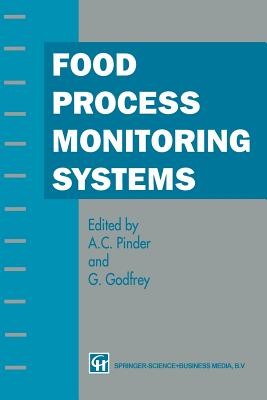
- We will send in 10–14 business days.
- Author: A C Pinder
- Publisher: Springer
- ISBN-10: 1461358930
- ISBN-13: 9781461358930
- Format: 15.6 x 23.4 x 1.3 cm, minkšti viršeliai
- Language: English
- SAVE -10% with code: EXTRA
Reviews
Description
The manufacture of foods and beverages is a highly competitive, interna- tionalindustry, and the range ofproducts is becomingincreasingly diverse. Manufacturers are required to produce quality foods with the highest possible efficiency and lowest possible cost, and international legislation is imposingstrict controls on food safety. Process control is the essential link between quality, safety and cost. Radical changes in the technology of manufacturing bring with them new requirements for monitoring (and ultimately controlling) increasingly complex parameters. The aim of this book is to review the latest developments in monitoring systems, particu- larly those suitable for the rapid sensing of composition, structure or microbial status. The emphasis is on 'up and coming' methods that have been proven in the laboratory or in other industrial environments, and offer potential in the food sector. As such, it is hoped that this book will increase the general awareness ofwhat new systems have to offer, and will act as a catalyst in the technology transfer process. The book features chapters on automated machine vision, fluorescence cytometry, infrared spectroscopy, light scattering spectroscopy, ultra- sound, mass spectrometry, and chemical and biological sensors. In all cases, the basic approach is to describe the underlying principles, and then to consider the implementation of a particular technique. Examples are given of the practical application to specific problems in the food industry.
EXTRA 10 % discount with code: EXTRA
The promotion ends in 21d.17:39:51
The discount code is valid when purchasing from 10 €. Discounts do not stack.
- Author: A C Pinder
- Publisher: Springer
- ISBN-10: 1461358930
- ISBN-13: 9781461358930
- Format: 15.6 x 23.4 x 1.3 cm, minkšti viršeliai
- Language: English English
The manufacture of foods and beverages is a highly competitive, interna- tionalindustry, and the range ofproducts is becomingincreasingly diverse. Manufacturers are required to produce quality foods with the highest possible efficiency and lowest possible cost, and international legislation is imposingstrict controls on food safety. Process control is the essential link between quality, safety and cost. Radical changes in the technology of manufacturing bring with them new requirements for monitoring (and ultimately controlling) increasingly complex parameters. The aim of this book is to review the latest developments in monitoring systems, particu- larly those suitable for the rapid sensing of composition, structure or microbial status. The emphasis is on 'up and coming' methods that have been proven in the laboratory or in other industrial environments, and offer potential in the food sector. As such, it is hoped that this book will increase the general awareness ofwhat new systems have to offer, and will act as a catalyst in the technology transfer process. The book features chapters on automated machine vision, fluorescence cytometry, infrared spectroscopy, light scattering spectroscopy, ultra- sound, mass spectrometry, and chemical and biological sensors. In all cases, the basic approach is to describe the underlying principles, and then to consider the implementation of a particular technique. Examples are given of the practical application to specific problems in the food industry.


Reviews